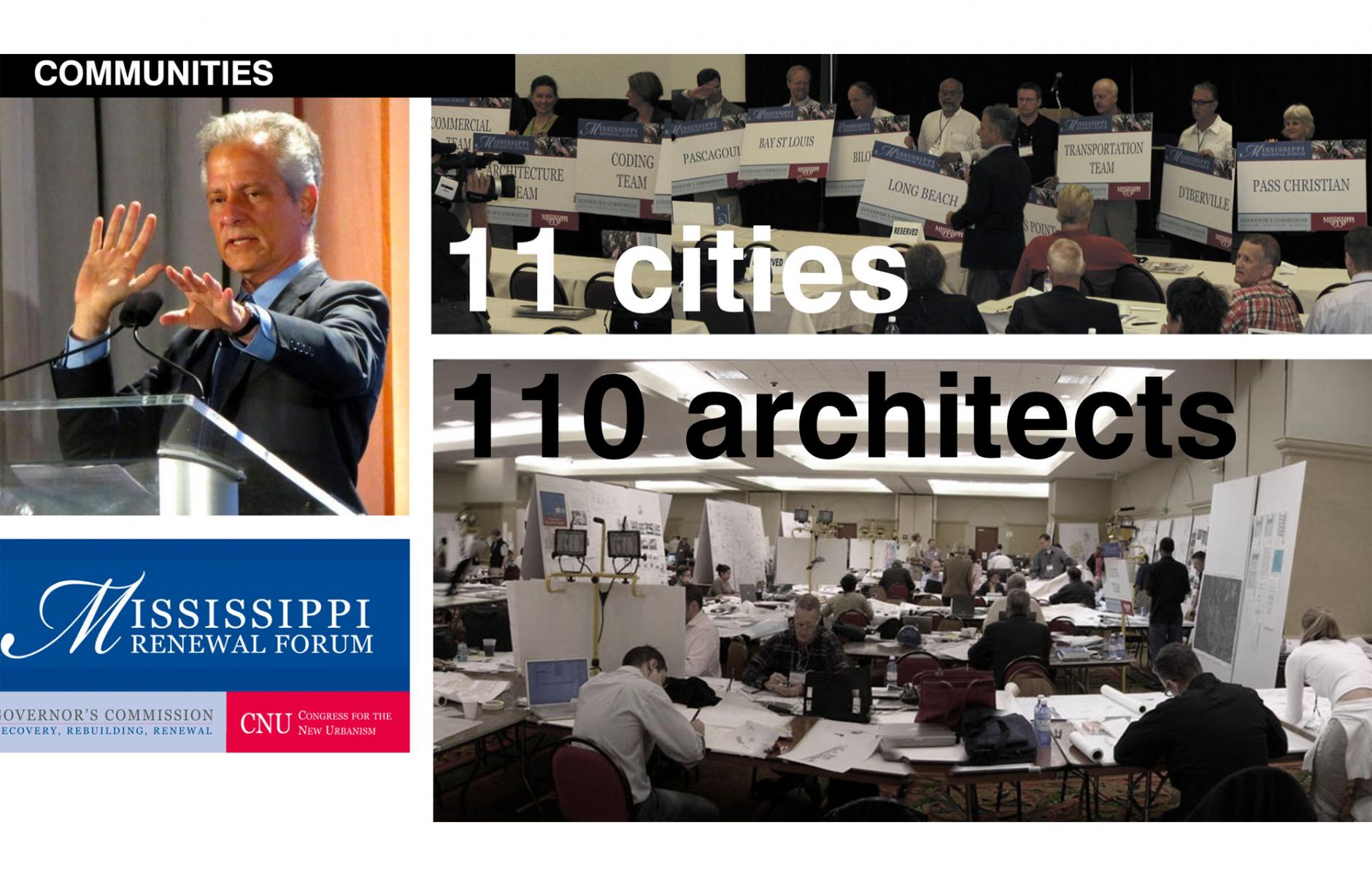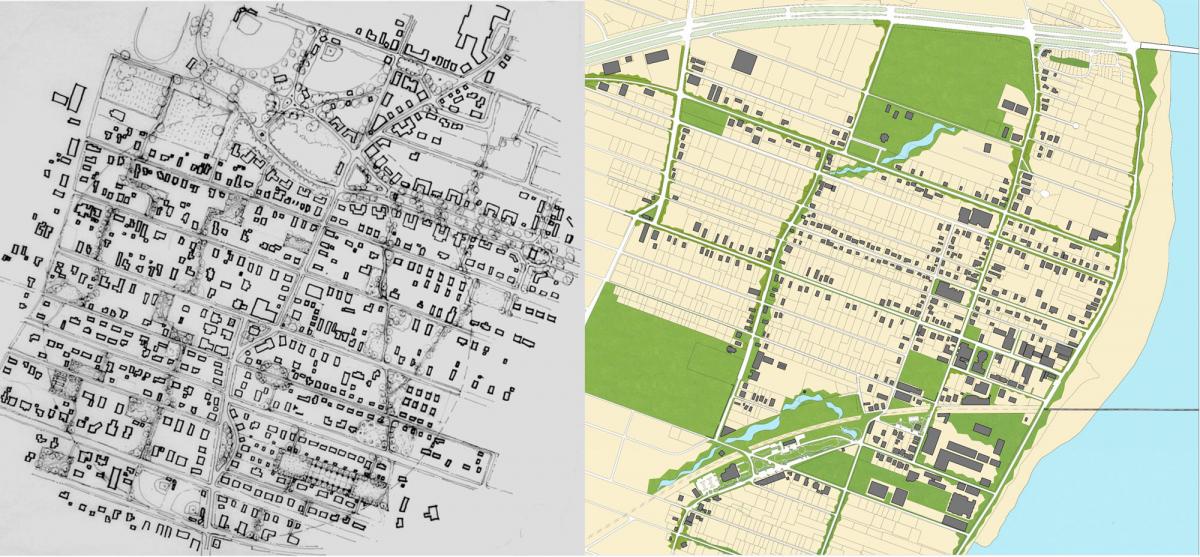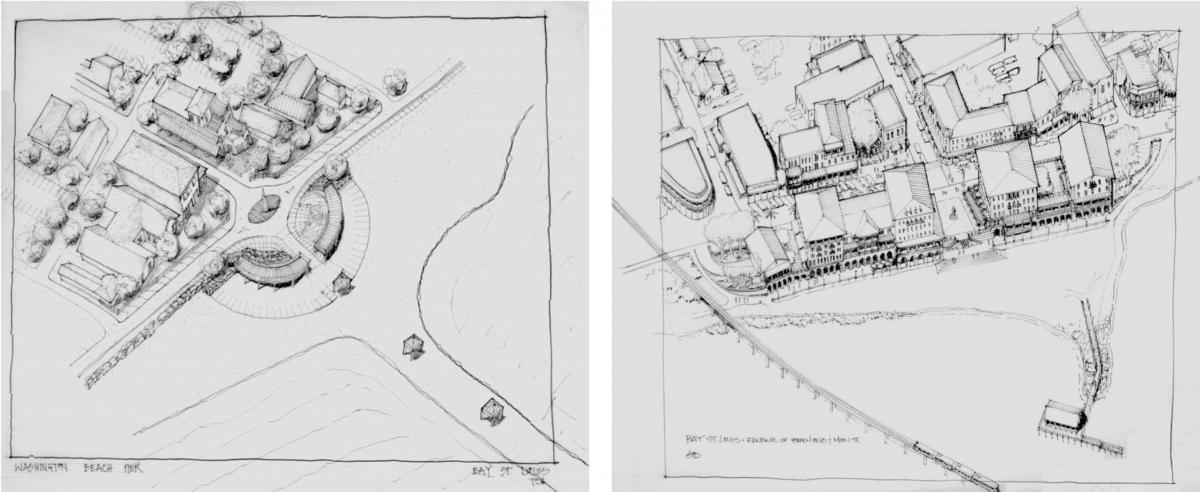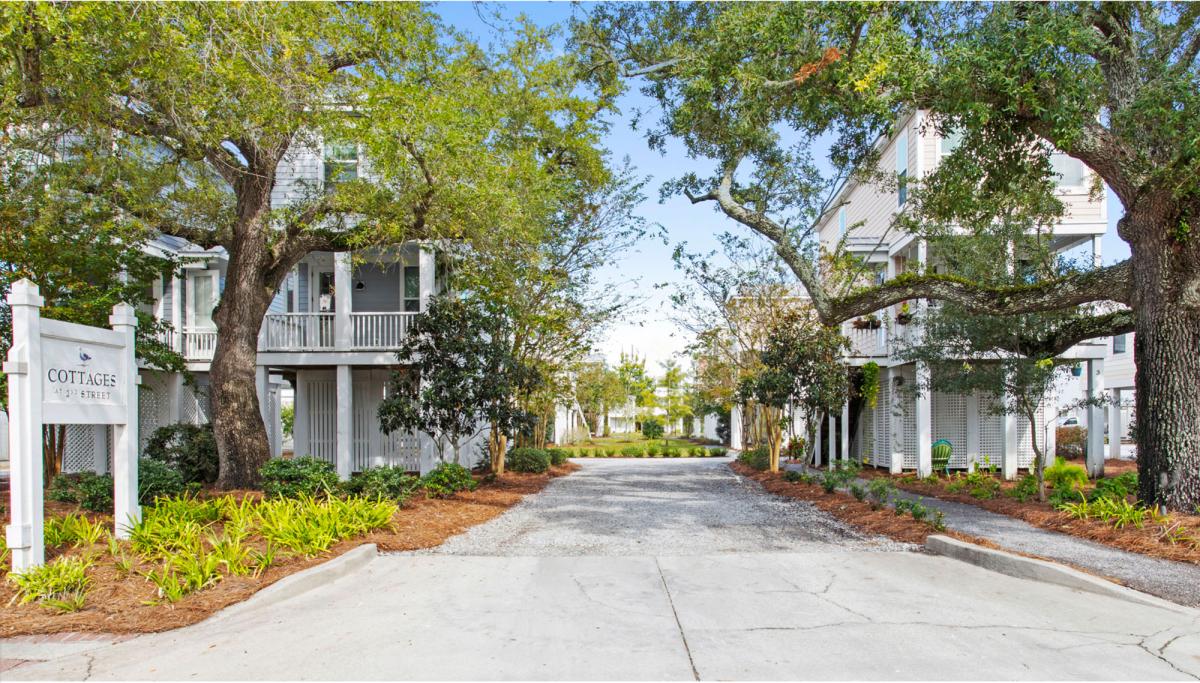
Mississippi Renewal Forum, historic planning event, shaped the coast
The Mississippi Renewal Forum was a landmark event of the Congress for the New Urbanism and one of the largest design charrettes ever organized.
It began 20 years ago this week in Biloxi, lasting eight days, creating plans for eleven cities on the Gulf Coast of Mississippi that were devastated by Hurricane Katrina’s massive storm surge. Participants in that charrette discussed their experiences and the impact that it had over the last two decades in a webinar on CNU’s On the Park Bench this week.
One of the panelists, Andres Duany, was called by the Mississippi governor to plan the recovery of the cities, and Duany worked with the Congress for the New Urbanism to assemble teams for each city, who worked side by side in one big room. All city teams shared teams of architects, engineers, GPS planners, and others.
Most of the major new urbanist firms sent designers, and some were even sent by the Prince of Wales, now King Charles, from the UK. Each team was composed of people from various different firms, who worked together seamlessly. “It was an amazing performance because it shows to what extent we had succeeded in a kind of technical expertise equivalent to that of suburbia. Suburbia is a smoothly functioning machine. We at that time also were a smoothly functioning machine,” he explains.
“The most remarkable thing was how easy it was to put together,” Duany says. “Because the new urbanists were on the same page. We shared a doctrine, a great deal of technology, and it was an extremely collegial group.” Many of the practitioners returned again and again over the years to refine and help implement the recovery efforts.

Allison Anderson, founder of unabridged Architecture in Bay Saint Louis, Mississippi, reported that most of the recommendations from the Forum were implemented in that city. One of the recommendations was to create a network of walkable streets and public spaces. “We did a whole slew of projects that built sidewalks, enhanced green space infrastructure, built greenway corridors, turned a ditch into a duck pond, and created an iconic site that has been adopted by many of the artists and merchants here,” she says.
The cities that successfully implemented Renewal Forum plans tended to have somebody who was at the Forum, especially a mayor, who had long-term influence in the years afterward. Citizens were scattered, and so the teams worked with mayors. But many of the mayors, whose lives were turned upside down, did not stay in power for long. One exception was Connie Moran, the long-time mayor of Ocean Springs, who was new to the job when Katrina hit.

“She ran with the plans, added to the plans, rallied the citizens and developers, rallied for trees, for historic preservation, for public spaces along the waterfront,” says Victor Dover, who led the Ocean Springs team. “Her whole career, as a long-time mayor, was devoted to rebuilding after the storm. She stuck up for the all-important building-to-street relationships.”
Ocean Springs adopted a form-based code in addition to multiple new urban plans after the Forum. Teams at the Forum produced 10 form-based codes, but only some of the cities ended up adopting such codes.
Architect Steve Mouzon, who played many roles during the event, was later involved in one influential Forum ideas—the Katrina Cottages. These small cottages were proposed to take the place of the disliked “FEMA trailers,” and 2,400 were built for the coast, Duany says. Although FEMA (Federal Emergency Management Agency) rules did not allow emergency housing to be used for permanent housing, many of the Mississippi cottages did become lasting homes and they can be seen today all along the coast. The cottages influenced the Tiny House movement, and Duany noted that Mouzon coined the term.

Developer Joe Cloyd, who was a young employee with the Mississippi Commission on Recovery, Renewal and Rebuilding during the Forum, has lived and worked as a developer on the Gulf Coast since then. He presented specific development plans that emerged from the Forum, which were later implemented. But the most significant impact was in the mindset of developers, he said.
“The Mississippi Renewal Forum really had tremendous specific assets created as a result of it, but I really do think that it opened the eyes of the people who were in the development community,” he says.
The Mississippi Gulf Coast is more resilient today than it was before Katrina and would better weather such a storm in several respects, the panelists reported. “Our infrastructure is much more resilient than it was,” explained Anderson. “They replaced every inch of infrastructure for a quarter mile inland along the Gulf Coast so that we know that is better prepared for the next disaster.”
Also, the flood plain maps changed and Mississippi adopted the higher standards recommended buy FEMA, whereas Alabama and Louisiana did not, she reports. That will put the state in a better position relative to sea level rise, she explains.
Other panelists noted that the updated Florida building code, designed to make buildings more resilient against hurricanes, is being adopted nationwide, including in Mississippi. While this may not perfectly protect buildings, those that meet that standard have a better chance of surviving a big storm.
Due to the challenges of rebuilding, it took some cities two decades to return to their pre-Katrina population levels. Meanwhile, a lot of new development migrated to north of I-10, about 10 miles inland, Duany reports. One thing he would do differently at a similar charrette today is to have some designers devoted to new communities further inland. “We find out where likely receiving areas are, and have at least a portion of our team designing the receiving areas, so that people don’t all move into unsustainable suburban sprawl,” he says.
The Mississippi Renewal Forum was a major event in urban planning, Duany notes. “Never in the history of urban planning has something like this happened. It was probably the high point in urban planning in the history of the world. Eleven cities in eight days. It was amazing how compatible the work was. Most was published later, and it was virtually interchangeable.”
Note: Even as the 20th anniversary of the Mississippi Renewal Forum was celebrated this week, we received word that Ocean Springs, MS, architect Bruce B. Tolar passed away. Tolar built the nationally recognized Cottage Square development of Katrina Cottages in Ocean Springs, among many accomplishments in a long career.
Watch the whole webinar below:




